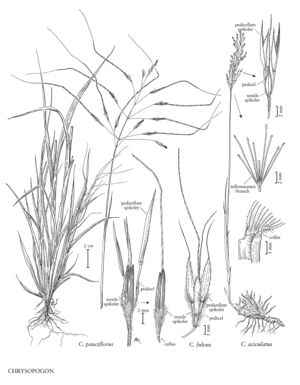Difference between revisions of "Chrysopogon fulvus"
FNA>Volume Importer |
imported>Volume Importer |
||
| (2 intermediate revisions by the same user not shown) | |||
| Line 4: | Line 4: | ||
|publications= | |publications= | ||
|common_names=Golden beardgrass | |common_names=Golden beardgrass | ||
| + | |special_status={{Treatment/ID/Special_status | ||
| + | |code=I | ||
| + | |label=Introduced | ||
| + | }} | ||
|basionyms= | |basionyms= | ||
|synonyms= | |synonyms= | ||
| Line 38: | Line 42: | ||
|publication title= | |publication title= | ||
|publication year= | |publication year= | ||
| − | |special status= | + | |special status=Introduced |
| − | |source xml=https:// | + | |source xml=https://bitbucket.org/aafc-mbb/fna-data-curation/src/200273ad09963decb8fc72550212de541d86569d/coarse_grained_fna_xml/V25/V25_1541.xml |
|subfamily=Poaceae subfam. Panicoideae | |subfamily=Poaceae subfam. Panicoideae | ||
|tribe=Poaceae tribe Andropogoneae | |tribe=Poaceae tribe Andropogoneae | ||
Latest revision as of 17:57, 11 May 2021
Plants perennial; cespitose, not stoloniferous. Culms 20-80(120) cm, geniculately ascending. Leaves mostly basal; sheaths glabrous; ligules 0.2-0.5 mm, membranous, ciliolate; blades 2-30 cm long, 2-3(9) mm wide, mostly glabrous or puberulous adaxially, bases sometimes with hispid hairs. Panicles 4-8(16) cm long, 1.5-3 cm wide, ovate, with many branches; branches 3-7 cm, sharply ascending, capillary, naked basal portions 2-6 cm, puberulous, terminating in a rame; rames with a triplet of spikelets. Sessile spikelets 3.5-5.2(8) mm (including the callus); calluses 0.7-1.5 mm, sharp, setose, hairs 1.5-1.9 mm, golden; lower glumes laterally compressed, smooth, hispidulous distally, acute; upper glumes with a dorsal fringe of hairs, awns 4.1-5.3(10) mm; upper lemmas awned, awns 2-3 cm, slightly geniculate, column twisted, puberulous, hairs 0.2-0.4 mm. Pedicels 1-2.5 mm, setose on the edges, hairs 3^.9 mm. Pedicellate spikelets 2.5-8 mm; lower glumes muticous or awned, awns to 0.7 cm. 2n = 40.
Discussion
Chrysopogon fulvus is native from southern India to Thailand, where it is considered a good forage grass. It was grown at the experiment station in Gainesville, Florida, and subsequently found in adjacent flatwoods as an escape.
Selected References
None.
